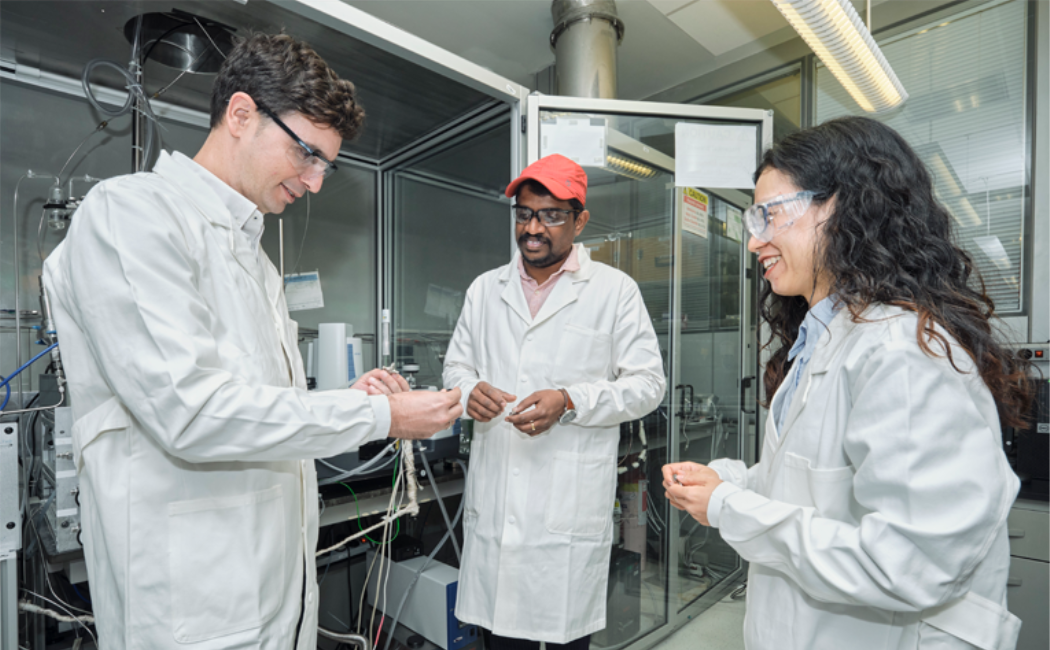
14 December, 2023
Operando spectroscopy and reactor techniques allow real-time assessments and understanding of reaction mechanisms. KAUST researchers employ these techniques to optimize the design and scaling-up of industrial catalytic processes. © 2023 KAUST; Eliza Mkhitaryan.
Approaches that integrate several spectroscopy and reactor technologies could help to depict catalysis better under realistic reaction conditions and support the design of more efficient and ecofriendly industrial processes.
An international KAUST-led team has refined an approach based on techniques that are already transforming the field of catalysis — operando spectroscopy and reactor techniques. They are using this to better understand catalysis for C1 chemistry reactions, which involve one-carbon molecules, such as the conversion of CO2 into methanol.
These operando techniques allow researchers to simultaneously study catalysts, reaction intermediates and adsorbed species under real reaction conditions. They provide real-time performance assessments and offer valuable insights into actual reaction mechanisms, making catalysts easier to tailor to specific reactions.
Combining complementary operando techniques in a single experimental setup can yield a more comprehensive knowledge of a catalytic process. Designing and scaling up catalytic processes for industrial applications hinges on accurate kinetic information. This multitechnique approach could help capture changes in dynamic processes while also providing data about all reacting species.
Yet, optimizing these experiments remains challenging. Individual analytical techniques have limitations that constrain operating conditions, geometry and reactor materials.
To overcome these limitations, modeling approaches are shown to be useful for designing operando cells and reactors, helping to understand the kinetics of catalytic reactions and scaling-up procedures.
“Without meticulous engineering, the design of operando reactors might fall short of achieving critical objectives such as mimicking industrial conditions and delivering high-quality data,” says Vijay Velisoju, a postdoc in Pedro Castaño’s group at KAUST.
Read more at KAUST Discovery.